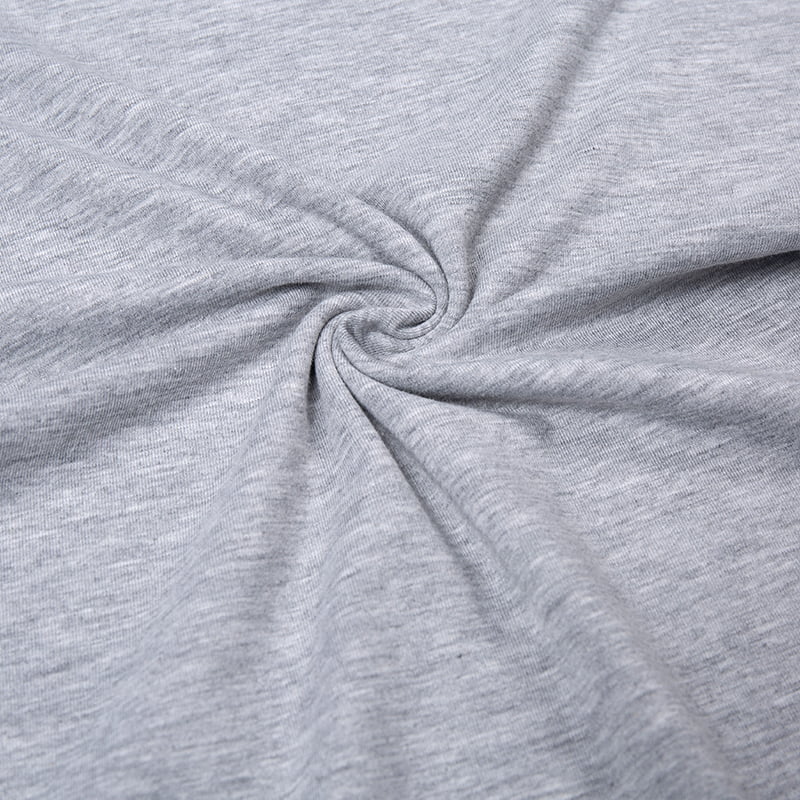
Jersey fabric, known for its soft texture and stretchability, is a popular choice for various apparel, including t-shirts, dresses, and sportswear. However, the fabric’s longevity and aesthetic appeal depend heavily on its color fastness and durability. These attributes are influenced by a combination of material properties, manufacturing processes, and care practices. This article delves into the key factors that affect the color fastness and durability of jersey fabric.
Material Composition
Fiber Type:
Natural Fibers: Jersey fabric made from natural fibers like cotton and wool tends to have a different durability and color fastness profile compared to synthetic fibers. Cotton jersey, for instance, is breathable and comfortable but may fade faster unless treated with appropriate dyes and finishes.
Synthetic Fibers: Polyester and nylon jerseys are known for their durability and resistance to fading. These fabrics often hold dyes better and can withstand repeated washing without significant color loss.
Blends:
Mixed Fibers: Blended jerseys (e.g., cotton-polyester) combine the benefits of both natural and synthetic fibers, offering a balance between comfort and durability. The blend ratio significantly impacts the fabric’s overall performance in terms of color retention and wear resistance.
Dyeing and Finishing Processes
Dye Selection:
Reactive Dyes: Commonly used for natural fibers like cotton, reactive dyes form a strong bond with the fiber, resulting in good color fastness to washing and light.
Disperse Dyes: Typically used for synthetic fibers, disperse dyes are known for their excellent color retention and resistance to fading.
Dyeing Techniques:
Batch Dyeing: This method involves immersing the fabric in a dye bath. It is suitable for small quantities but requires precise control to ensure uniform color and fastness.
Continuous Dyeing: Involves passing the fabric through a series of dyeing, washing, and drying steps. This method is efficient for large-scale production and generally results in consistent color fastness.
Finishing Treatments:
Color Fixatives: Post-dyeing treatments with color fixatives can enhance the color fastness of jersey fabric by preventing dye migration during washing.
UV Protectants: Applying UV protectants can help reduce color fading caused by exposure to sunlight.
Fabric Construction
Knit Structure:
Single Jersey: This basic knit structure is lightweight and stretchable, but may be less durable and more prone to pilling compared to other knit types.
Double Jersey: Also known as interlock, this structure is thicker, more stable, and offers better durability and shape retention.
Yarn Quality:
Combed Yarns: Using combed yarns, which have been processed to remove short fibers, results in a smoother and stronger fabric with enhanced durability and less pilling.
Twist and Ply: Higher twist and ply in the yarns can improve the fabric’s strength and reduce the likelihood of wear and tear.

Care and Maintenance
Washing Practices:
Gentle Washing: Using gentle cycles and mild detergents helps maintain the color and integrity of jersey fabric. Harsh washing can cause color bleeding and fabric damage.
Cold Water: Washing in cold water minimizes color fading and fabric shrinkage.
Drying Methods:
Air Drying: Air drying is gentler on jersey fabric compared to machine drying, which can cause shrinkage and weaken fibers over time.
Tumble Drying: If machine drying is necessary, using low heat settings can help preserve the fabric’s color and elasticity.
Ironing and Storage:
Low Heat Ironing: High temperatures can damage jersey fabric and cause color fading. Using a low heat setting when ironing is recommended.
Proper Storage: Storing jersey garments in a cool, dry place away from direct sunlight helps prevent color fading and fabric degradation.
The color fastness and durability of jersey fabric are critical factors that determine its longevity and appearance over time. By understanding the impact of material composition, dyeing and finishing processes, fabric construction, and care practices, manufacturers and consumers can make informed choices that enhance the performance of jersey garments. Ensuring high-quality materials and adopting proper care routines will help maintain the vibrant colors and structural integrity of jersey fabric, ensuring it remains a favored choice for comfortable and stylish apparel.


 English
English 中文简体
中文简体











